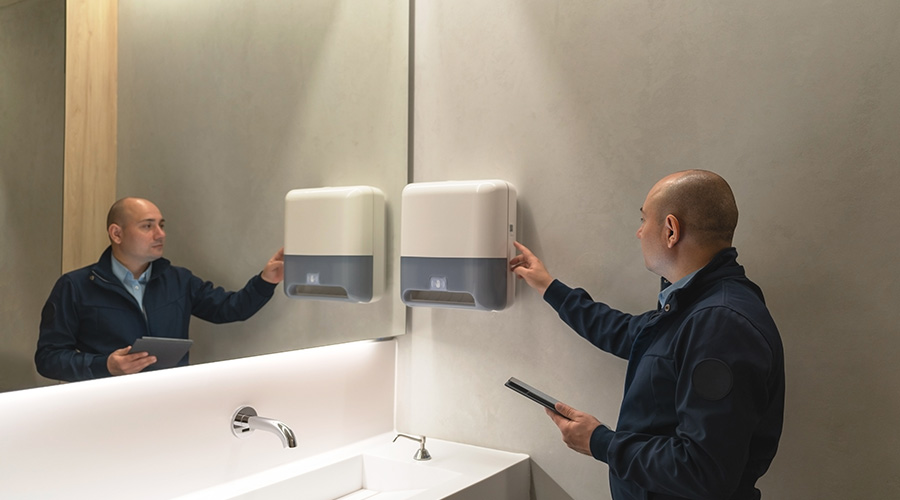To aid front-line technicians in performing drain cleaning tasks effectively and safely, equipment manufacturers emphasize the importance of having up-to-date information on key issues.
Safety Considerations for Drain Cleaning Equipment
New-generation drain cleaning products address technicians’ needs for efficiency and safety to ensure system performance
Drain cleaning is a routine activity for technicians in maintenance and engineering departments, but that does not mean technicians can treat it casually. The process presents a range of potential hazards that managers can address with training and education.
“Safe operation should always be the number one concern when operating any type of drain-cleaning equipment,” Speranza says. “Users should always wear heavy leather gloves and eye protection, and they should always read the safety and operating instructions provided. This information is readily available online from the manufacturer.”
Silverman advises technicians to embrace training for drain-cleaning equipment.
“Don’t be afraid of the training process,” he says. “It’s not as hard as it once was, and you have a tremendous amount of resources to back you up.” Among the resources available to technicians, he says, are such educational tools as videos, blogs, websites, instructional manuals and customer service reps who can provide the novice drain cleaner with the information they need to become comfortable.
“Drain-cleaning machines have evolved to become much safer and easier to use,” Silverman says. “Drain cleaning is a skill like any other, the fundamentals of which can be understood in minutes and mastered in hours. The learning curve slopes upward for years after the initial experience, but acceptable levels of proficiency and safety can be acquired on the first day.”
To reinforce the focus on safety and training, Goede advises managers to be certain technicians are using the most recent training and education materials.
“When training operators, whether they are new or time-tested veterans, it is important that the latest information is communicated,” he says. “Updates are made to products and are sometimes imperceptible to the end user. Ensuring that you have the latest product manuals, literature, training documents and videos is key when training operators in the safest way to operate a product.”
Fine-tuning the process
Maximizing a department’s investment in drain-cleaning equipment requires that managers take time to understand both the demands of their facilities and the available equipment options. Matching them effectively helps to ensure that technicians will be able to work effectively under often difficult circumstances.
“It is important for managers to match the right machine with the application,” Speranza says. “One size does not fit all when it comes to drain maintenance. Manufacturers of this equipment have the knowledge and expertise to help their customers select the most effective equipment for the variety of applications the maintenance professional faces.”
The right choice will have an impact beyond just effective drain cleaning.
“Modern drain cleaning equipment is highly specialized,” Silverman says. “Placing the correct tool in the end users hands will drastically cut down on safety, time management, and cost-effectiveness issues within the organization.
“For example, the machine that a facility maintenance engineer would use to clean a sink drain would be both useless and dangerous if he attempted to use it to clear a 4-inch main line. If your engineer was attempting to clear grease from a food service line, using a cable-style machine would be both ineffective and costly, since the job would have to be repeated on a regular basis. The correct tool for the job would be a high-pressure water jetter that is designed to scour the inside of the pipe and remove all the grease and soft stoppages in a few minutes.
“Make a careful evaluation of a facility’s plumbing system before making a procurement decision in order to make sure that maintenance engineers have all of the proper tools on hand in order to deal with any situation that might arise.”
Related Topics:













